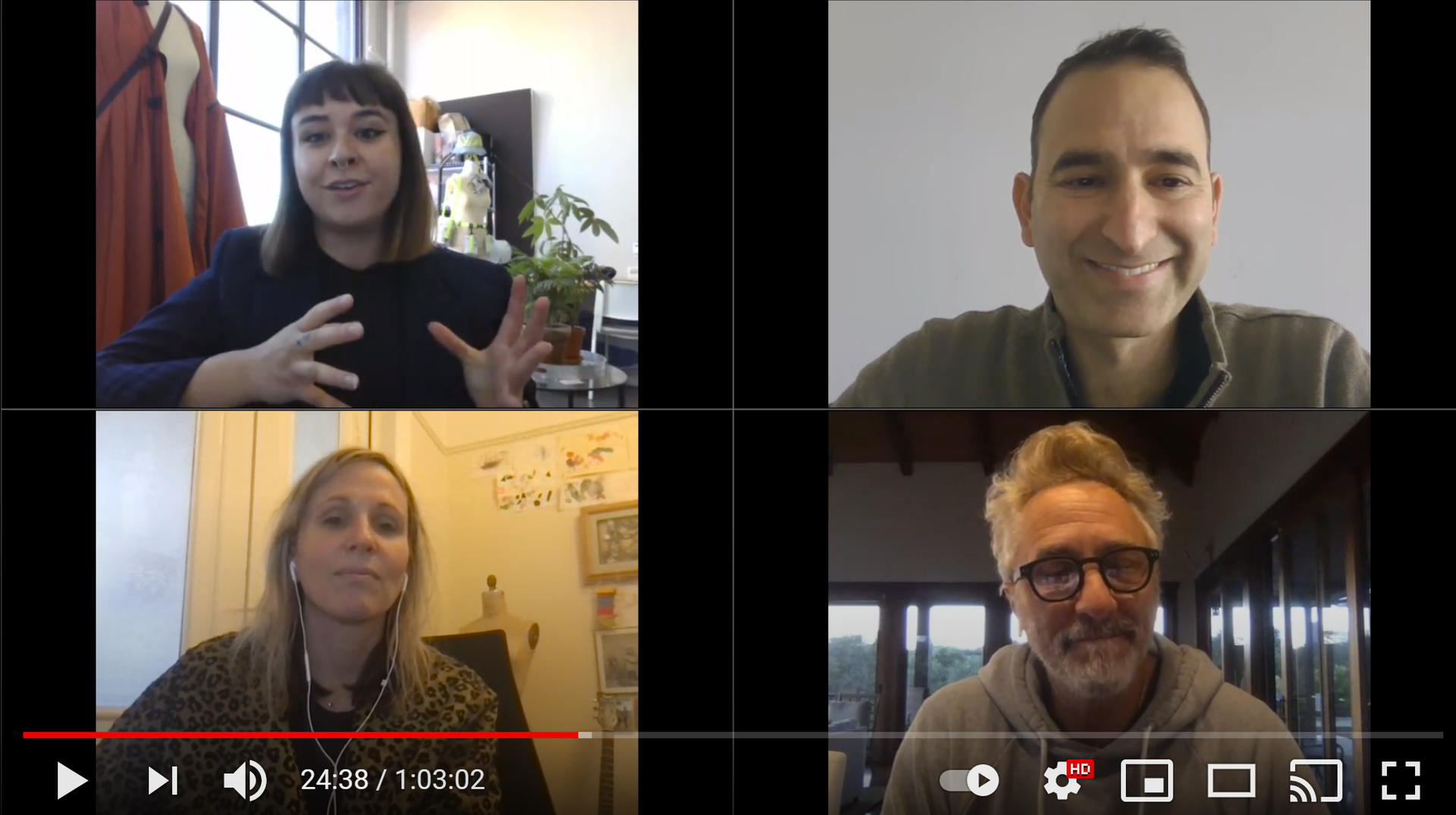The CFDA hosted a candid virtual conversation with leading Native American & Indigenous designers, academics, and experts in fashion, each of whom discussed how the industry can help to foster and preserve the crafts of the Native American & Indigenous design community.
Moderated by Christian Allaire (Ojibwe from Nipissing First Nation), Writer, Editor and Stylist at Vogue and author of The Power of Style, we were joined by Korina Emmerich (Puyallup), Founder and Designer of Emme Studio; Orlando Dugi, Founder and Designer of Orlando Dugi; Riley Kucheran (Biigtigong Nishnaabeg), Assistant Professor of Design Leadership at Ryerson University; Sage Paul (Denesuline), Artistic Director of Indigenous Fashion Week, and CFDA member Anna Sheffield, Founder and Designer of Anna Sheffield Fine Jewelry.
Cultural appropriation versus appreciation was a topic. “There are so many layers of meaning,” Kucheran said. “Within a garment, there might be aspects of spirit or ceremony. I think that’s the key harm that cultural appropriation does. It just takes the aesthetics and you lose the meaning, you lose the value.”
Designers such as Dugi source inspiration from familial connections to their surroundings and incorporate intricate details into their work with songs, prayers, and people. There is a fine line between cultural appropriation and cultural appreciation, where someone is inspired by Indigenous design and wants to highlight it versus extracting Native and Indigenous heritage for self-gain.
True cultural appreciation begins by building relationships and collaborating with Indigenous designers. As Sheffield stated, “[In order to bring the conversation forward, we can achieve this with] cultural preservation and giving other people a forum and opening the dialogue in a broader way.”
Perceived difficulties of being an Indigenous designer in the fashion industry run the gamut due to the varying internal protocols and lack of education. “We don’t have the luxury to create just to create,” Emmerich said. “I think a lot of people can just make clothes and be successful. I think that for us we really exist in this intersection of education and aesthetics.”
Too often, Indigenous designers are tokenized in western culture accompanied by performative expectations to produce novelty designs based on Native stereotypes. Organizations such as Toronto’s Indigenous Fashion Week, where Paul leads initiatives to foster an economy in communities that the mainstream industry will the want to embrace rather than mimic.
Although substantial change is dependent on the mainstream industry educating itself, the Native American and Indigenous design community is focused on rebuilding fashion systems, which have existed for thousands of years and will continue to persevere by supporting its leaders, form collectives, and think more collaboratively.
Below are additional resources to explore:
Beyond Buckskin
Traditional Knowledge & Intellectual Property
A Media Production Guide to Working with First Nations, Metis and Inuit Communities, Cultures, Concepts and Stories
Indigenous Kinship Collective Mutual Aid – https://venmo.com/indigenouskinshipcollective
yəhaw̓ Indigenous Creatives Collective
Urban Indigenous Collective
Sovereign Bodies Institute
Slow Factory Foundation and their Open Education Program
Indigenous Fashion MOOC (Massive Open Online Course), a free introduction to Indigenous cultures/histories through fashion. The course has not launched yet but you can participate or sign up for the course.
Fashion Studies coming out soon
Fashioning Resurgence Panel Series at IFWTO



